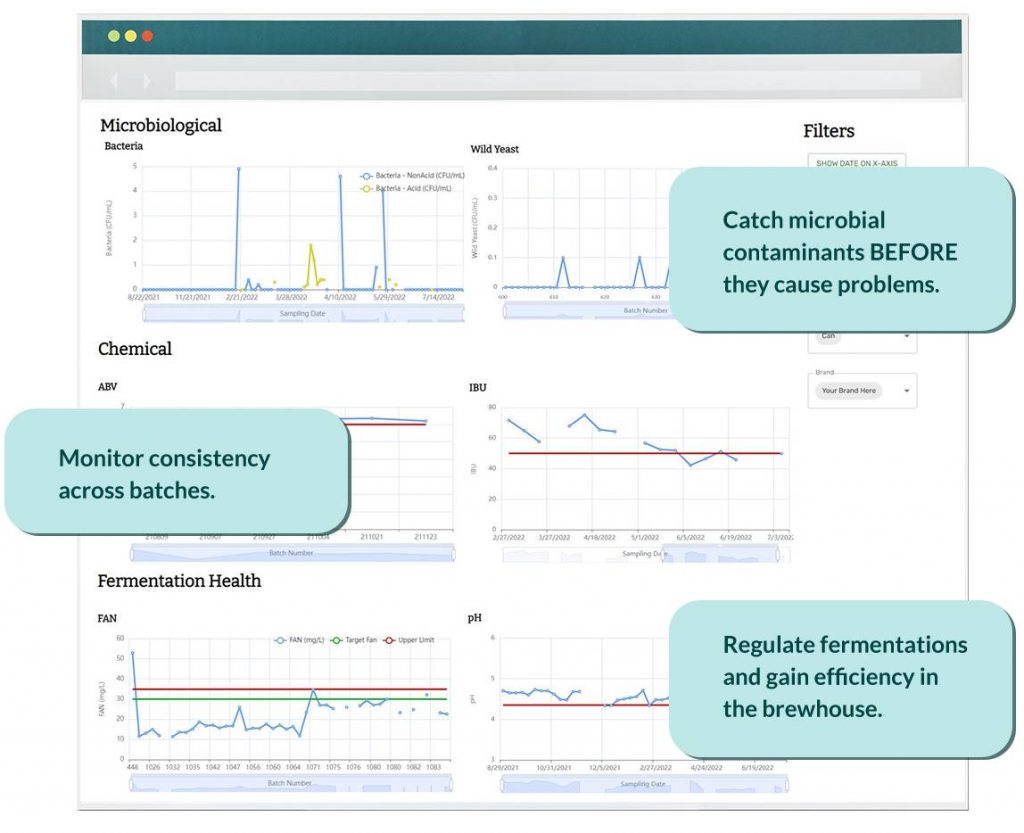Free amino nitrogen (FAN)
Amino acids are the building blocks of proteins. Strung together in chains whose order dictates how a given protein folds and interacts with its environment, standard amino acids come in 20 shapes and sizes.
When we talk about “free amino nitrogen”, we are referring to the concentration of available amino acids not bound up in proteins. This comes mainly from the malt. Highly modified malt carries higher FAN.
Like all cells, yeast need amino acids to build new cells and maintain existing ones. If FAN is limited, yeast growth might be constrained. But if amino acids are too abundant, yeast can turn them into other compounds – higher alcohol, esters or diacetyl. So there’s a sweet spot.
When the brewer oxygenates the wort, they are providing a critical nutrient that yeast use to build cellular materials. When FAN isn’t fully utilized, it is often an indication that wort oxygenation was inadequate. If the yeast can’t grow properly, the population becomes stressed with insufficient redox power inside the cells. Acetaldehyde formation is a typical outcome.
Many breweries have approached us over the years with off-flavour issues. We often identify weak yeast health as the culprit and regular FAN monitoring as the solution.
So you can see how FAN can impact or report on flavour. It can also oxidize finished products.
Cellar and packaging teams rightfully fret about oxygen, but it turns out that certain amino acids also drive oxidation and staling. Meanwhile, if you’ve ever left a glass of beer on the coffee table and noticed a colour change the next morning, you’ve witnessed Maillard reactions. These occur between sugars and amino acids. Maillard compounds frequently taste “stale”, and higher levels of residual sugar or residual FAN will accelerate these reactions.
If FAN wavers outside of set targets, Raft will suggest process tweaks to get things back on track.
So it’s enormously helpful for breweries to regularly monitor residual FAN. What Raft clients find is that they achieve flavour and fermentation consistency and predictability once they’ve combined sensory (tasting) with residual or final FAN measurements that set the targets in stone for each core brand. We can estimate starting FAN from the recipe or by measuring the wort once or twice.
If residual FAN wavers outside the targets, we let you know how to get things back on track.

To summarize: Free amino nitrogen (FAN) is the concentration of available amino acids in a liquid. The amount of FAN used in fermentation can tell us the risk of off-flavours like acetaldehyde, diacetyl, excessive esters and higher alcohols. High residual or final FAN also drives Maillard reactions and oxidation. Set your FAN targets and start monitoring today!

 Back to Blog
Back to Blog